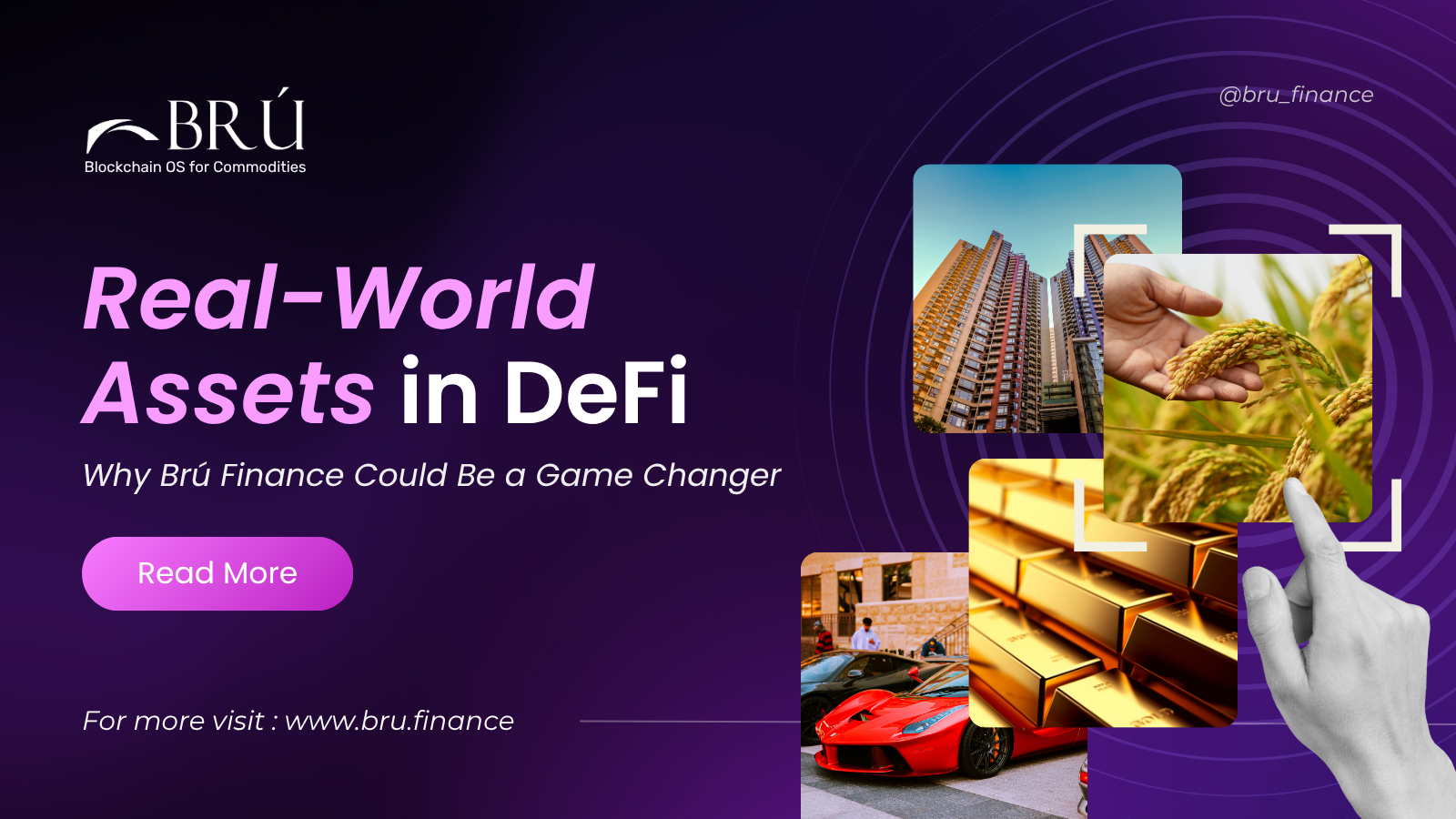
Real-World Assets in DeFi: Why Brú Finance Could Be a Game Changer
Published On : October 14, 2025
One of the most exciting narratives taking off in the crypto & DeFi world right now is Real-World Assets (RWAs). These are assets you know—commodities, real estate, agricultural produce, invoices—that are brought on-chain via tokenization. They act as bridges between the traditional economy and the emerging world of decentralized finance. Among the platforms pushing this frontier, Brú Finance stands out. Here's why it might just change the face of DeFi.
What Are Real-World Assets & Why They Matter
RWAs convert tangible things into digital tokens on a blockchain. This opens up:
- Liquidity for assets that are usually illiquid (e.g. stored crops, inventory).
- Credit access for people or businesses that can't access traditional loans easily.
- Stability since many RWAs are less volatile than crypto-only collateral.
- Inclusion by enabling investors globally to participate, even with smaller amounts.
How Brú Finance Brings RWAs Into DeFi
Brú Finance is doing several things that make the practical adoption of RWAs possible:
1. Tokenization of Commodities
Brú converts agricultural commodities stored in known, verified warehouses into digital tokens, often using warehouse receipts or similar instruments. These tokenized assets are usable onchain—meaning they can be used as collateral in lending, or converted into bonds.
2. Fractional Bonds & Lending
Brú offers "Brú Bonds" — six-month bonds backed by agri-assets. Liquidity providers can subscribe to these bonds, earning returns (often in the range of 8-12%) while the collateral is over-collateralized (often ~140%) to ensure security.
These proceeds are then lent out to participants in commodity supply chains—farmers, traders, processors—helping them unlock capital without selling their physical assets.
3. Custodian Nodes & Trust Mechanisms
To reduce risk, Brú deploys custodian nodes and audits to ensure assets backing the tokens are real and verifiable. Smart contracts handle a lot of the logic, helping automate transparency and reduce intermediaries.
4. Financial Inclusion & Emerging Markets Focus
A big promise of Brú is to serve those who have been underbanked or unbanked—especially farmers and small businesses in emerging economies. By using RWAs, Brú lowers barriers that traditional finance often presents: high collateral, low accessibility, slow processes.
5. Regulation-Friendly & Cross-Border Reach
While regulation is always a concern in DeFi, Brú is building with auditability, transparency, and traceability in mind, positioning itself to work with existing legal frameworks. Also, its model allows investors from anywhere to invest in bonds backed by real assets in emerging markets—bridging the global north with south.
Why Brú Finance Could Be a Game Changer
Putting it all together: Brú's model hits a sweet spot—combining real asset backing with decentralized finance efficiencies. It offers:
- Higher returns than many savings vehicles, with reduced volatility compared to crypto-only collateral.
- Real economic impact by helping farmers and supply chain players access capital they need.
- Democratization of investment: smaller investors can participate in asset-backed bonds.
- Better risk models—because you're not just betting on crypto prices, but on real commodities stored, audited, and collateralized.
If Brú continues to scale—expanding its asset classes, strengthening custodian networks, and maintaining regulatory compliance—it could help shift DeFi from largely speculative to fundamentally productive, grounded, and inclusive.
Conclusion
Real-World Assets are more than a trending buzzword. They are the next frontier in DeFi that promises stability, utility, and broader access. Platforms like Brú Finance are carving paths toward a future where finance is not just digital—but rooted in physical value and real people. For anyone interested in DeFi with purpose, Brú is one to watch closely.
For more updates and latest news about Brú Finance, please join our Twitter Channel, Discord server, LinkedIn, Telegram at
Please join our Discord events and Twitter AMAs to connect directly with our founders and ask your queries.
Discord: https://discord.gg/8C9SZXDy2r
Telegram Channel : https://t.me/bruofficial
Twitter : https://twitter.com/bru_finance
LinkedIn : https://www.linkedin.com/company/bru-finance/
Facebook :https://www.facebook.com/brufinance/
Instagram :https://www.instagram.com/brufinance/?igshid=YmMyMTA2M2Y%3D

On-chain Protocol for Assets Tokenisation & Finance
 1.png)